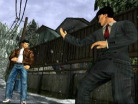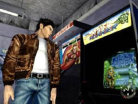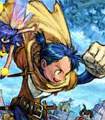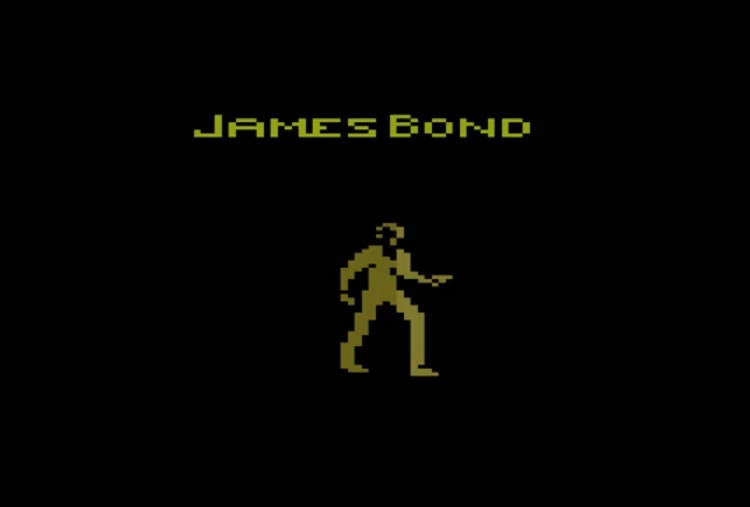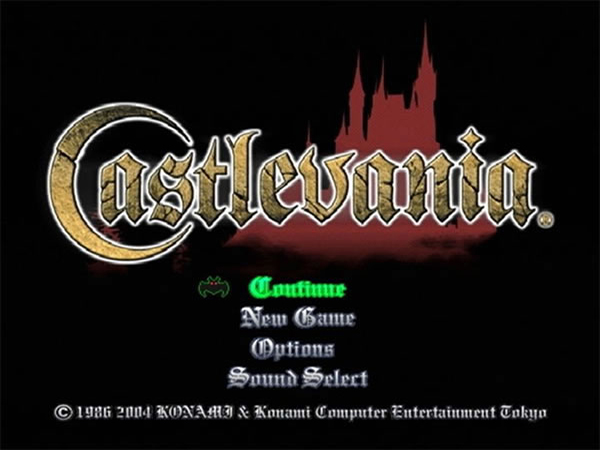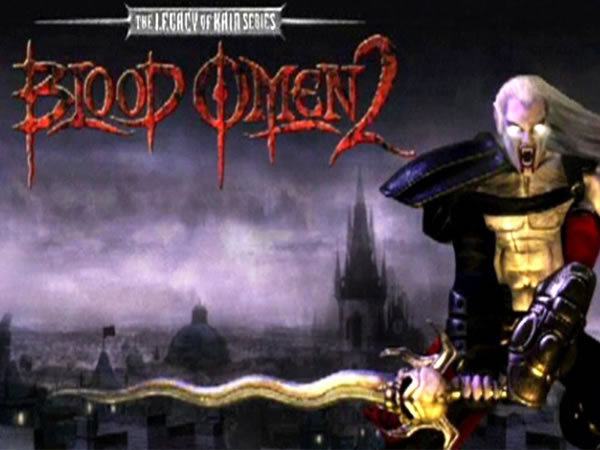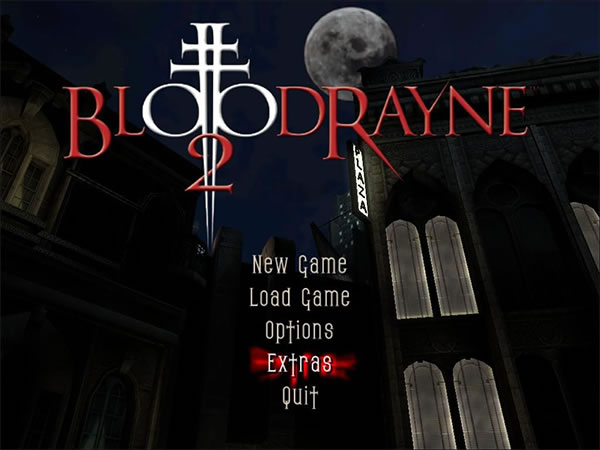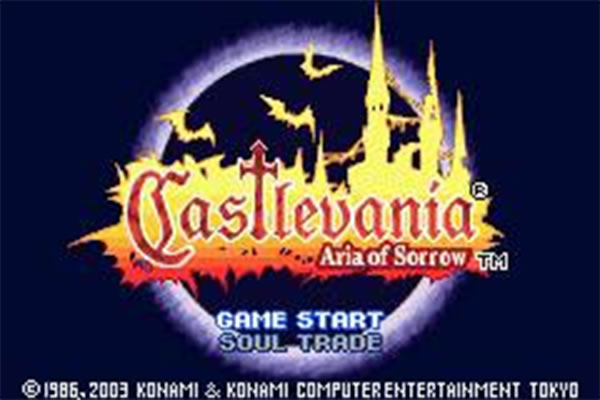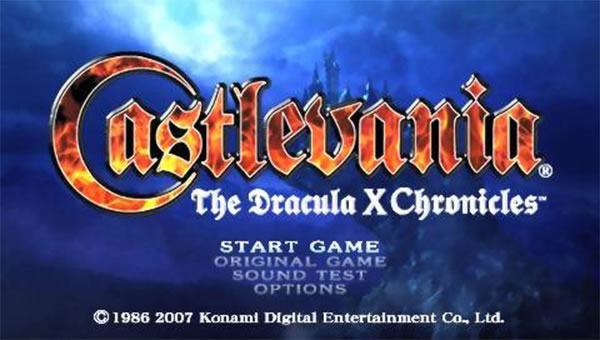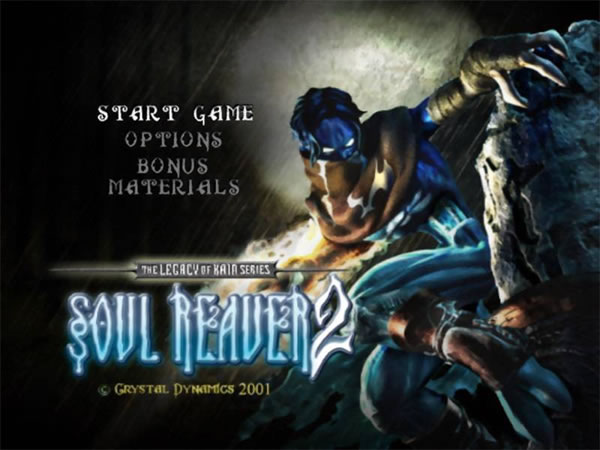- CLASSIC MAGAZINES
- REVIEW CREW
A show recapping what critics thought back
when classic games first came out! - NEXT GENERATION'S BEST & WORST
From the worst 1-star reviews to the best
5-stars can offer, this is Next Generation! - NINTENDO POWER (ARCHIVE)
Experience a variety of shows looking at the
often baffling history of Nintendo Power! - MAGAZINE RETROSPECTIVE
We're looking at the absolutely true history of
some of the most iconic game magazines ever! - SUPER PLAY'S TOP 600
The longest and most ambitious Super NES
countdown on the internet! - THEY SAID WHAT?
Debunking predictions and gossip found
in classic video game magazines! - NEXT GENERATION UNCOVERED
Cyril is back in this spin-off series, featuring the
cover critic review the art of Next Generation! - HARDCORE GAMER MAGAZING (PDF ISSUES)
Download all 36 issues of Hardcore Gamer
Magazine and relive the fun in PDF form!
- REVIEW CREW
- ELECTRONIC GAMING MONTHLY
- ELECTRONIC GAMING MONTHLY RANKS
From Mario to Sonic to Street Fighter, EGM
ranks classic game franchises and consoles! - ELECTRONIC GAMING MONTHLY BEST & WORST
Counting down EGM’s best and worst reviews
going year by year, from 1989 – 2009! - ELECTRONIC GAMING BEST & WORST AWARDS
11-part video series chronicling the ups and
downs of EGM’s Best & Worst Awards!
- ELECTRONIC GAMING MONTHLY RANKS
- GAME HISTORY
- GAME OVER: STORY BREAKDOWNS
Long-running series breaking down game
stories and analyzing their endings! - A BRIEF HISTORY OF GAMING w/ [NAME HERE]
Real history presented in a fun and pithy
format from a variety of game historians! - THE BLACK SHEEP
A series looking back at the black sheep
entries in popular game franchises! - INSTANT EXPERT
Everything you could possibly want to know
about a wide variety of gaming topics! - FREEZE FRAME
When something familiar happens in the games
industry, we're there to take a picture! - I'VE GOT YOUR NUMBER
Learn real video game history through a series
of number-themed episodes, starting at zero! - GREAT MOMENTS IN BAD ACTING
A joyous celebration of some of gaming's
absolute worst voice acting!
- GAME OVER: STORY BREAKDOWNS
- POPULAR SHOWS
- DG NEWS w/ LORNE RISELEY
Newsman Lorne Riseley hosts a regular
series looking at the hottest gaming news! - REVIEW REWIND
Cyril replays a game he reviewed 10+ years
ago to see if he got it right or wrong! - ON-RUNNING FEUDS
Defunct Games' longest-running show, with
editorials, observations and other fun oddities! - DEFUNCT GAMES QUIZ (ARCHIVE)
From online quizzes to game shows, we're
putting your video game knowledge to the test!- QUIZ: ONLINE PASS
Take a weekly quiz to see how well you know
the news and current gaming events! - QUIZ: KNOW THE GAME
One-on-one quiz show where contestants
find out if they actually know classic games! - QUIZ: THE LEADERBOARD
Can you guess the game based on the classic
review? Find out with The Leaderboard!
- QUIZ: ONLINE PASS
- DEFUNCT GAMES VS.
Cyril and the Defunct Games staff isn't afraid
to choose their favorite games and more! - CYRIL READS WORLDS OF POWER
Defunct Games recreates classic game
novelizations through the audio book format!
- DG NEWS w/ LORNE RISELEY
- COMEDY
- GAME EXPECTANCY
How long will your favorite hero live? We crunch
the numbers in this series about dying! - VIDEO GAME ADVICE
Famous game characters answer real personal
advice questions with a humorous slant! - FAKE GAMES: GUERILLA SCRAPBOOK
A long-running series about fake games and
the people who love them (covers included)! - WORST GAME EVER
A contest that attempts to create the worst
video game ever made, complete with covers! - LEVEL 1 STORIES
Literature based on the first stages of some
of your favorite classic video games! - THE COVER CRITIC
One of Defunct Games' earliest shows, Cover
Critic digs up some of the worst box art ever! - COMMERCIAL BREAK
Take a trip through some of the best and
worst video game advertisements of all time! - COMIC BOOK MODS
You've never seen comics like this before.
A curious mix of rewritten video game comics!
- GAME EXPECTANCY
- SERIES ARCHIVE
- NINTENDO SWITCH ONLINE ARCHIVE
A regularly-updated list of every Nintendo
Switch Online release, plus links to review! - PLAYSTATION PLUS CLASSIC ARCHIVE
A comprehensive list of every PlayStation
Plus classic release, including links! - RETRO-BIT PUBLISHING ARCHIVE
A regularly-updated list of every Retro-Bit
game released! - REVIEW MARATHONS w/ ADAM WALLACE
Join critic Adam Wallace as he takes us on a
classic review marathon with different themes!- DEFUNCT GAMES GOLF CLUB
Adam Wallace takes to the links to slice his way
through 72 classic golf game reviews! - 007 IN PIXELS
Adam Wallace takes on the world's greatest spy
as he reviews 15 weeks of James Bond games! - A SALUTE TO VAMPIRES
Adam Wallace is sinking his teeth into a series
covering Castlevania, BloodRayne and more! - CAPCOM'S CURSE
Adam Wallace is celebrating 13 days of Halloween
with a line-up of Capcom's scariest games! - THE FALL OF SUPERMAN
Adam Wallace is a man of steel for playing
some of the absolute worst Superman games! - THE 31 GAMES OF HALLOWEEN
Adam Wallace spends every day of October afraid
as he reviews some of the scariest games ever! - 12 WEEKS OF STAR TREK
Adam Wallace boldly goes where no critic has
gone before in this Star Trek marathon!
- DEFUNCT GAMES GOLF CLUB
- DAYS OF CHRISTMAS (ARCHIVE)
Annual holiday series with themed-episodes
that date all the way back to 2001!- 2015: 30 Ridiculous Retro Rumors
- 2014: 29 Magazines of Christmas
- 2013: 29 Questionable Power-Ups of Christmas
- 2012: 34 Theme Songs of Christmas
- 2011: 32 Game Endings of Christmas
- 2010: 31 Bonus Levels of Christmas
- 2009: 30 Genres of Christmas
- 2008: 29 Controls of Christmas
- 2007: 34 Cliches of Christmas
- 2006: 33 Consoles of Christmas
- 2005: 32 Articles of Christmas
- 2004: 31 Websites of Christmas
- 2003: 29 Issues of Christmas
- 2002: 28 Years of Christmas
- 2001: 33 Days of Christmas
- NINTENDO SWITCH ONLINE ARCHIVE
- REVIEW ARCHIVE
- FULL ARCHIVE
Shenmue
The Dreamcast may have died but the Shenmue series certainly didn't! And the first installment is just one of the masterpieces in the three-part volume. Created by the famed Yu Suzuki, who brought us classic arcade games like Hang-On and Space Harrier as well as the Virtua Fighter titles, he strikes again with his now classic Shenmue.
The game is unbelievably original in countless ways. The story's construction doesn't follow a set plan and can twist and turn depending on the player's actions and choices. Real-time is implemented making everything and anything you do take a toll on the clock. A first-person perspective can be used and allows items that would usually be discarded as scenery to sometimes become vital elements of the game. Among the many other revolutionary aspects Shenmue employed, the best has to be one of its secrets. If you complete the game and save the data a selection named Magic Weather will be unlocked. Once the game is saved go to the options menu and turn on Magic Weather. The weather is already convincing since it changes sporadically, but now the true forecast of Yokosuka in 1986 and 1987 will occur during gameplay!
The story is probably the most unoriginal part of Shenmue. Set in 1986, Ryo Hazuki comes home to find it in shambles. He hurries in to find his father, Iwao, being questioned for the "Dragon Mirror." The questioner is a mysterious man in a silk orient uniform, his name is not mentioned. His two thugs dressed in black suits hold Ryo back as his father and the stranger (who has a unique martial arts style) battle. Iwao is killed but not before revealing the whereabouts of the mirror in hopes that they will not kill his son. The next day Ryo embarks on his quest to find out who his father's murderer is and avenge his death. Besides the killer and the aforementioned mirror there are no intriguing motives to the plot. The son avenges father scenario is common in most mediums of storytelling and hardly makes the impact it wishes. The date also seems irrelevant, had the story been set in a modern setting it would have been just as interesting.
The prerendered cinema clips are very smooth and could easily be mistaken for one of its newer titles. The graphics during gameplay have a mesmerizing quality to them, yet they still have that Virtua Fighter touch. Even with that realization, the color schemes and attention to detail more than make up for that minute blemish.
The controls seem complex at first, but once you begin to experiment with them they easily become second nature. The left trigger allows Ryo to run; this is probably the best control in the game since the areas are so large. The right trigger turns your perspective into first-person. While in this mode numerous items previously unavailable in the third-person view can be examined and taken. The other buttons are mainly to talk and grab things. Only when you learn new moves or fight will they gain multiple uses.
An interesting area of concern is the Passport disc. There are four discs in total for Shenmue, three are filled with the game, and another with random dealings (Passport disc). There are four categories on the disc to choose from. Information has different characters from the game giving tutorials of how things work. The Theater has scenes that have already been viewed in the game. The Music has music heard from in the game. And finally there is a Passport function. This function was the entire cause for the Passport disc and is no longer available. This feature would allow you to connect to the internet and do several things. You could place your name on a rank board, view your player's supposed statistics that monitor elements such as how much money Ryo's spent, or compare mini-game scores with other Shenmue enthusiasts. There was also "Everybody's Space" where players could trade items, check the weather forecast, find Shenmue news, or trade in winning cans from the game. That's right, winning cans once had a reason to be as such and winners would be awarded with a special item downloaded into their VMU! Unfortunately, there is no longer a way to connect to the internet for these special features.
Sounds in the game are exceptional. Each sound has crystal clarity distinguishing it from things as little as the tiniest meowing cat to things as unimportant as a soda can cracking open. The voice-overs are another story. Most of the dialogue spoken seldom matches the actions of the characters' mouths. Since there are a lot of cut scenes throughout the game it becomes increasingly annoying seeing the same repeated mistake over and over. If you want to hear some familiar Shenmue character voices and avoid a poorly dubbed visual, then insert one of the four discs into a device like a CD player. One of four characters will then tell you that the disc will not work on anything other than the Dreamcast.
The surroundings in Shenmue are more than likely what used up most of the 20 million dollar budget. Houses, shops, people, and special items are all features that help create the interactive environment. Ryo can talk to random people and get information on your quest, or walk over to a vending machine and pay for a refreshing can of cola. Possibly the most appealing interactivity you can achieve is in the arcade. Once in the arcade Ryo can play different games, including Hang-On and Space Harrier! And if you don't want to waste "money" playing these classic games all the time, there is a secret that will allow Ryo to win a Sega Saturn CD with all the games on them. After doing so you can go back to Ryo's house and play it on his Sega Saturn.
There are a few drawbacks in the game. One is that turning around becomes a dilemma. Instead of pushing down and having Ryo respond by flipping around instantaneously, he patiently makes two separate turns before going in the direction. Another shortcoming is that while in an environment there are many more doors locked rather than opened. This can be excused considering its age. A final downside is the cut scenes. When a scene comes on it can't be avoided by pushing Start or any other buttons, the best you can do is put it on subtitles and quickly click through them.
Besides these minor setbacks, the game is a superb piece of artwork as well as a revolutionary step to many of the games today. It entails such a wide range of things to do that even when you finish Shenmue you could start it over and go about it in a completely different manner. It's hard to sum up one of Dreamcast's greatest works it ever produced, but if I had to, I'd say it is a historical landmark that will never lose its edge in the gaming world.
The game is unbelievably original in countless ways. The story's construction doesn't follow a set plan and can twist and turn depending on the player's actions and choices. Real-time is implemented making everything and anything you do take a toll on the clock. A first-person perspective can be used and allows items that would usually be discarded as scenery to sometimes become vital elements of the game. Among the many other revolutionary aspects Shenmue employed, the best has to be one of its secrets. If you complete the game and save the data a selection named Magic Weather will be unlocked. Once the game is saved go to the options menu and turn on Magic Weather. The weather is already convincing since it changes sporadically, but now the true forecast of Yokosuka in 1986 and 1987 will occur during gameplay!
The story is probably the most unoriginal part of Shenmue. Set in 1986, Ryo Hazuki comes home to find it in shambles. He hurries in to find his father, Iwao, being questioned for the "Dragon Mirror." The questioner is a mysterious man in a silk orient uniform, his name is not mentioned. His two thugs dressed in black suits hold Ryo back as his father and the stranger (who has a unique martial arts style) battle. Iwao is killed but not before revealing the whereabouts of the mirror in hopes that they will not kill his son. The next day Ryo embarks on his quest to find out who his father's murderer is and avenge his death. Besides the killer and the aforementioned mirror there are no intriguing motives to the plot. The son avenges father scenario is common in most mediums of storytelling and hardly makes the impact it wishes. The date also seems irrelevant, had the story been set in a modern setting it would have been just as interesting.
The prerendered cinema clips are very smooth and could easily be mistaken for one of its newer titles. The graphics during gameplay have a mesmerizing quality to them, yet they still have that Virtua Fighter touch. Even with that realization, the color schemes and attention to detail more than make up for that minute blemish.
The controls seem complex at first, but once you begin to experiment with them they easily become second nature. The left trigger allows Ryo to run; this is probably the best control in the game since the areas are so large. The right trigger turns your perspective into first-person. While in this mode numerous items previously unavailable in the third-person view can be examined and taken. The other buttons are mainly to talk and grab things. Only when you learn new moves or fight will they gain multiple uses.
An interesting area of concern is the Passport disc. There are four discs in total for Shenmue, three are filled with the game, and another with random dealings (Passport disc). There are four categories on the disc to choose from. Information has different characters from the game giving tutorials of how things work. The Theater has scenes that have already been viewed in the game. The Music has music heard from in the game. And finally there is a Passport function. This function was the entire cause for the Passport disc and is no longer available. This feature would allow you to connect to the internet and do several things. You could place your name on a rank board, view your player's supposed statistics that monitor elements such as how much money Ryo's spent, or compare mini-game scores with other Shenmue enthusiasts. There was also "Everybody's Space" where players could trade items, check the weather forecast, find Shenmue news, or trade in winning cans from the game. That's right, winning cans once had a reason to be as such and winners would be awarded with a special item downloaded into their VMU! Unfortunately, there is no longer a way to connect to the internet for these special features.
Sounds in the game are exceptional. Each sound has crystal clarity distinguishing it from things as little as the tiniest meowing cat to things as unimportant as a soda can cracking open. The voice-overs are another story. Most of the dialogue spoken seldom matches the actions of the characters' mouths. Since there are a lot of cut scenes throughout the game it becomes increasingly annoying seeing the same repeated mistake over and over. If you want to hear some familiar Shenmue character voices and avoid a poorly dubbed visual, then insert one of the four discs into a device like a CD player. One of four characters will then tell you that the disc will not work on anything other than the Dreamcast.
The surroundings in Shenmue are more than likely what used up most of the 20 million dollar budget. Houses, shops, people, and special items are all features that help create the interactive environment. Ryo can talk to random people and get information on your quest, or walk over to a vending machine and pay for a refreshing can of cola. Possibly the most appealing interactivity you can achieve is in the arcade. Once in the arcade Ryo can play different games, including Hang-On and Space Harrier! And if you don't want to waste "money" playing these classic games all the time, there is a secret that will allow Ryo to win a Sega Saturn CD with all the games on them. After doing so you can go back to Ryo's house and play it on his Sega Saturn.
There are a few drawbacks in the game. One is that turning around becomes a dilemma. Instead of pushing down and having Ryo respond by flipping around instantaneously, he patiently makes two separate turns before going in the direction. Another shortcoming is that while in an environment there are many more doors locked rather than opened. This can be excused considering its age. A final downside is the cut scenes. When a scene comes on it can't be avoided by pushing Start or any other buttons, the best you can do is put it on subtitles and quickly click through them.
Besides these minor setbacks, the game is a superb piece of artwork as well as a revolutionary step to many of the games today. It entails such a wide range of things to do that even when you finish Shenmue you could start it over and go about it in a completely different manner. It's hard to sum up one of Dreamcast's greatest works it ever produced, but if I had to, I'd say it is a historical landmark that will never lose its edge in the gaming world.
HOME |
CONTACT |
NOW HIRING |
WHAT IS DEFUNCT GAMES? |
NINTENDO SWITCH ONLINE |
RETRO-BIT PUBLISHING
Retro-Bit |
Switch Planet |
The Halcyon Show |
Same Name, Different Game |
Dragnix |
Press the Buttons
Game Zone Online | Hardcore Gamer | The Dreamcast Junkyard | Video Game Blogger
Dr Strife | Games For Lunch | Mondo Cool Cast | Boxed Pixels | Sega CD Universe | Gaming Trend
Game Zone Online | Hardcore Gamer | The Dreamcast Junkyard | Video Game Blogger
Dr Strife | Games For Lunch | Mondo Cool Cast | Boxed Pixels | Sega CD Universe | Gaming Trend
Copyright © 2001-2025 Defunct Games
All rights reserved. All trademarks are properties of their respective owners.
All rights reserved. All trademarks are properties of their respective owners.






